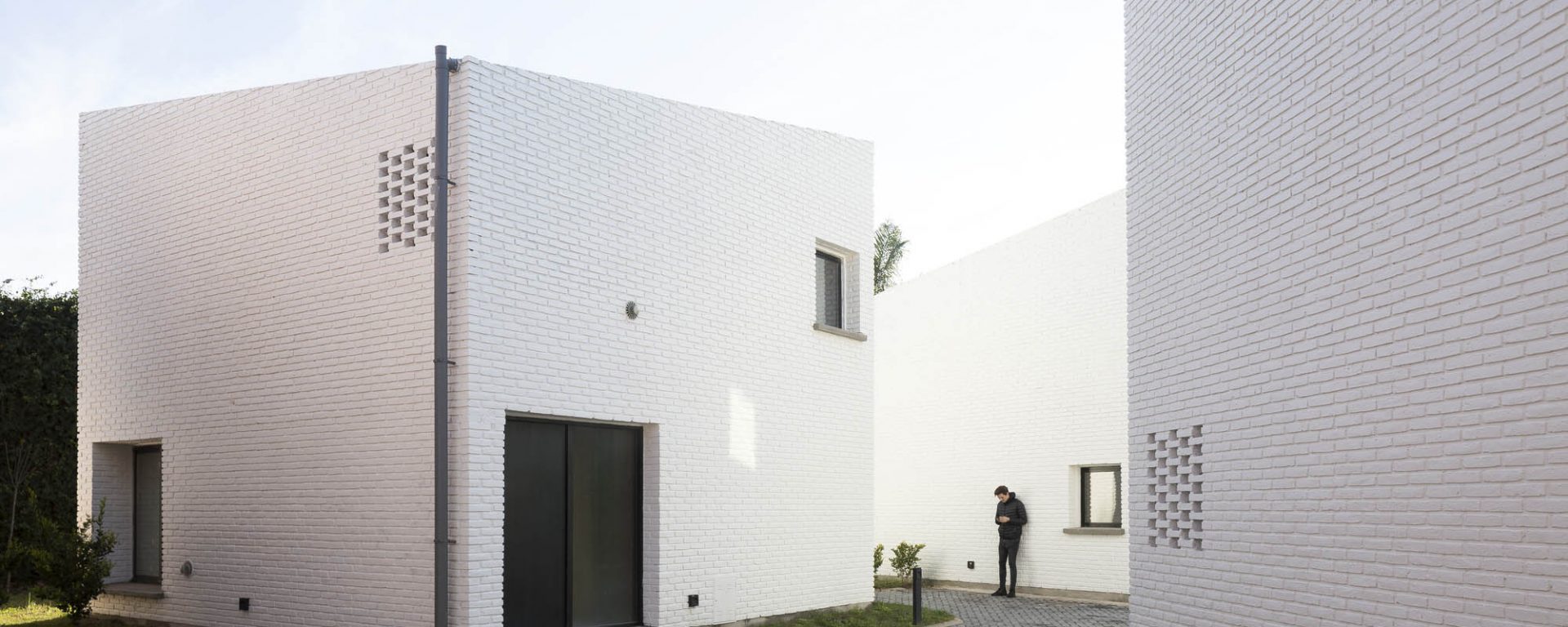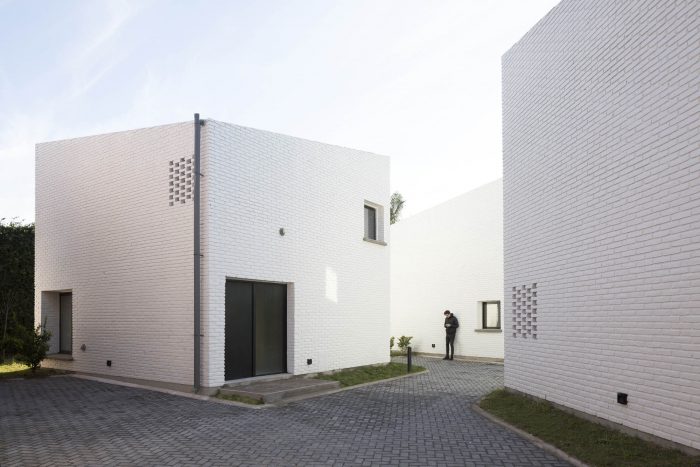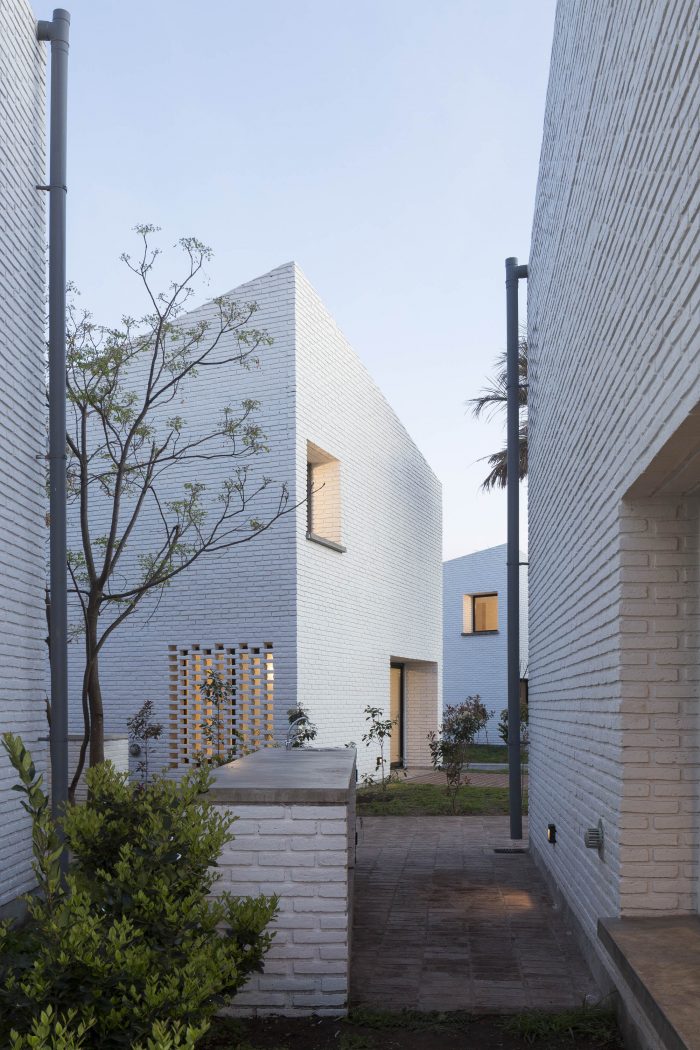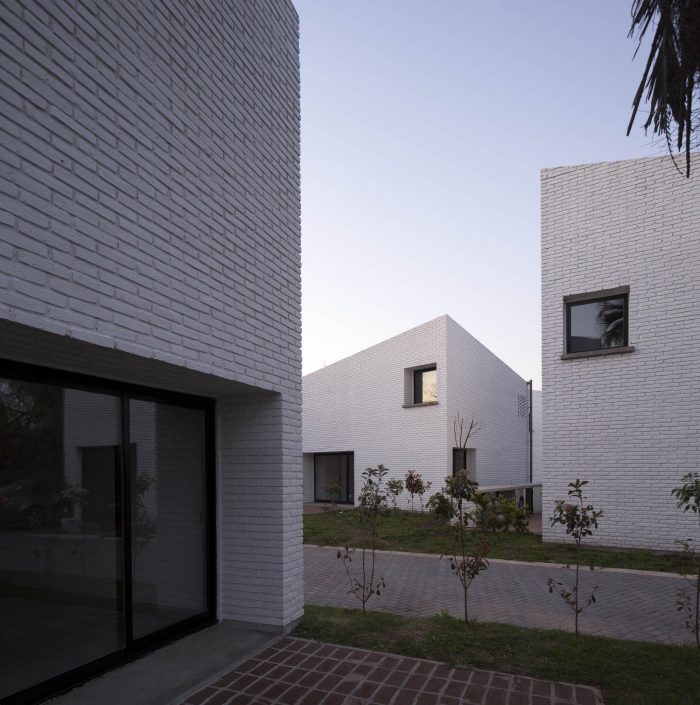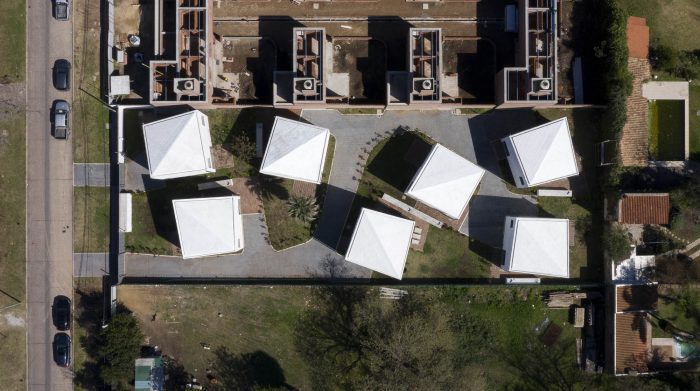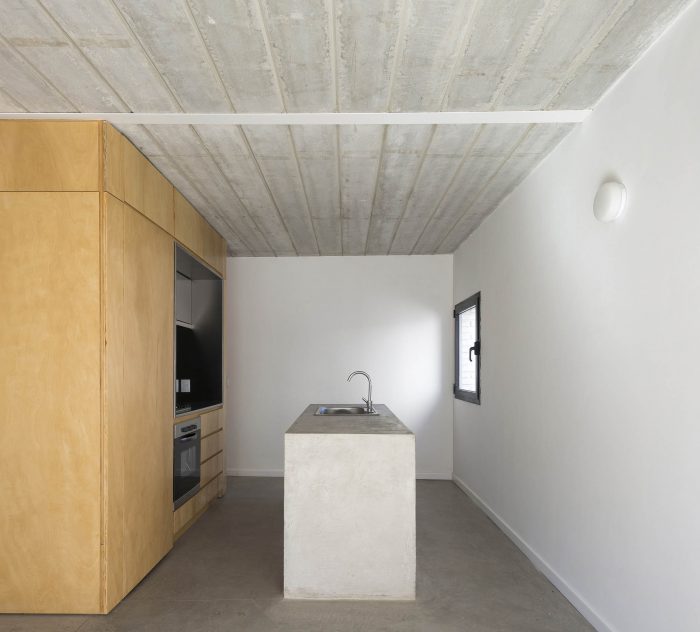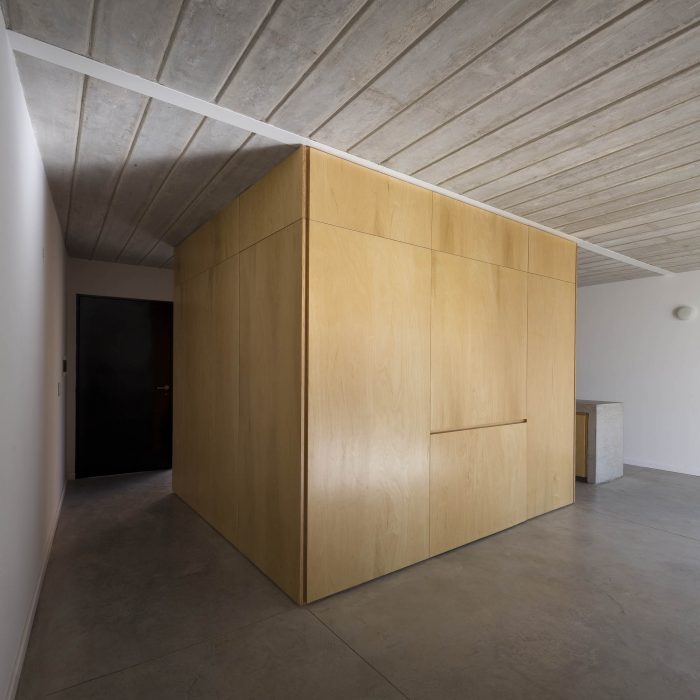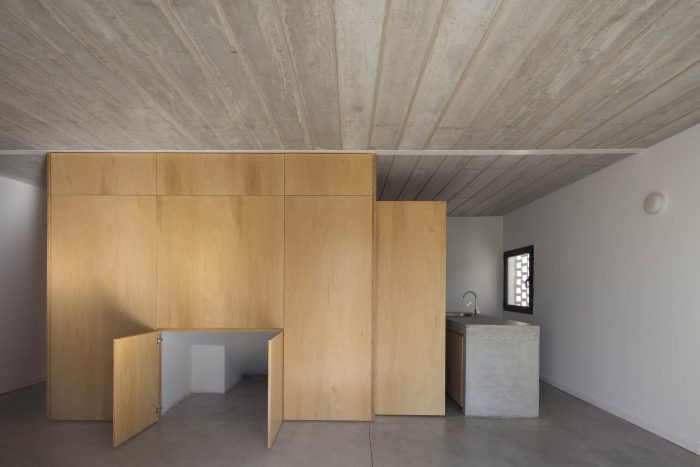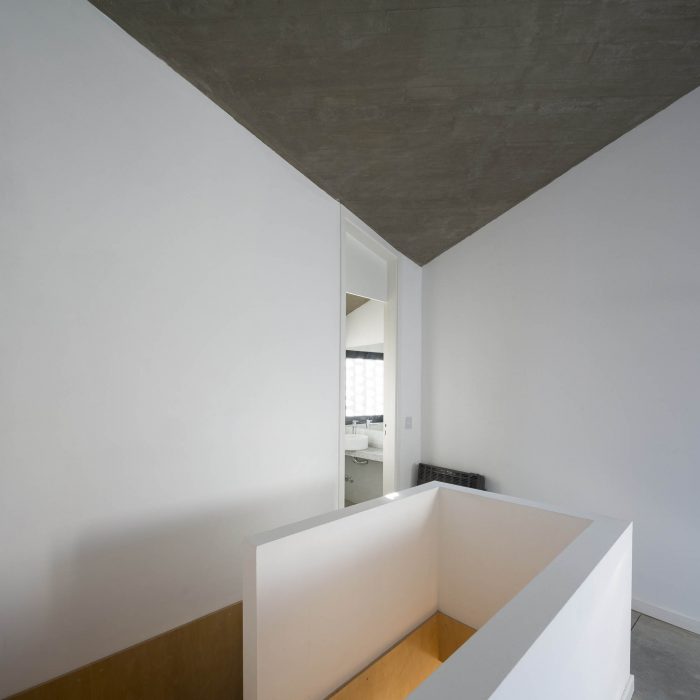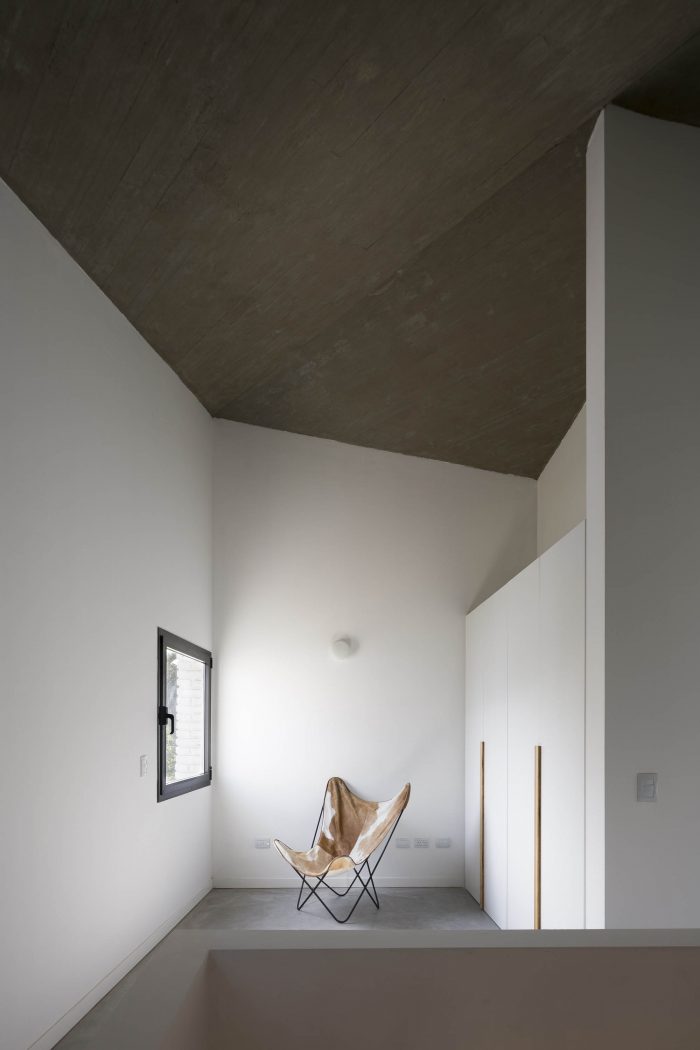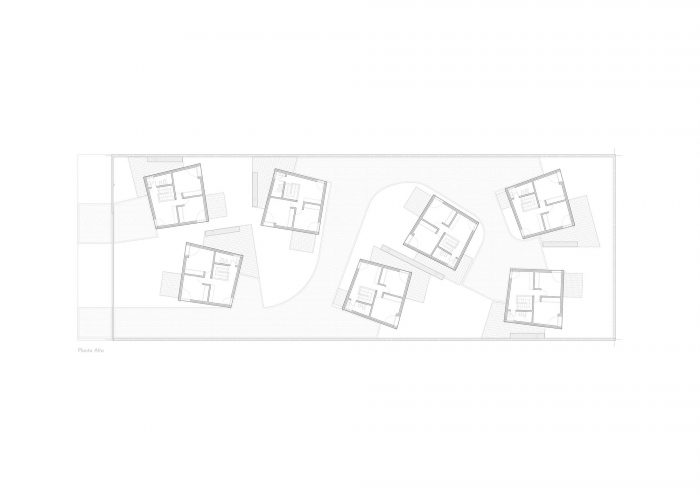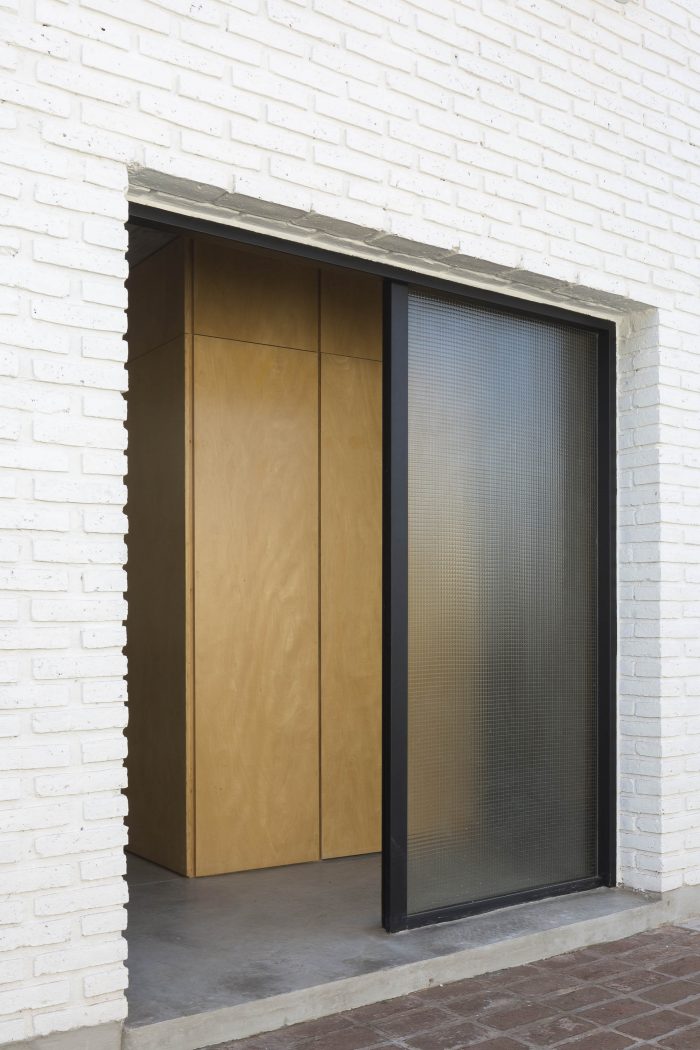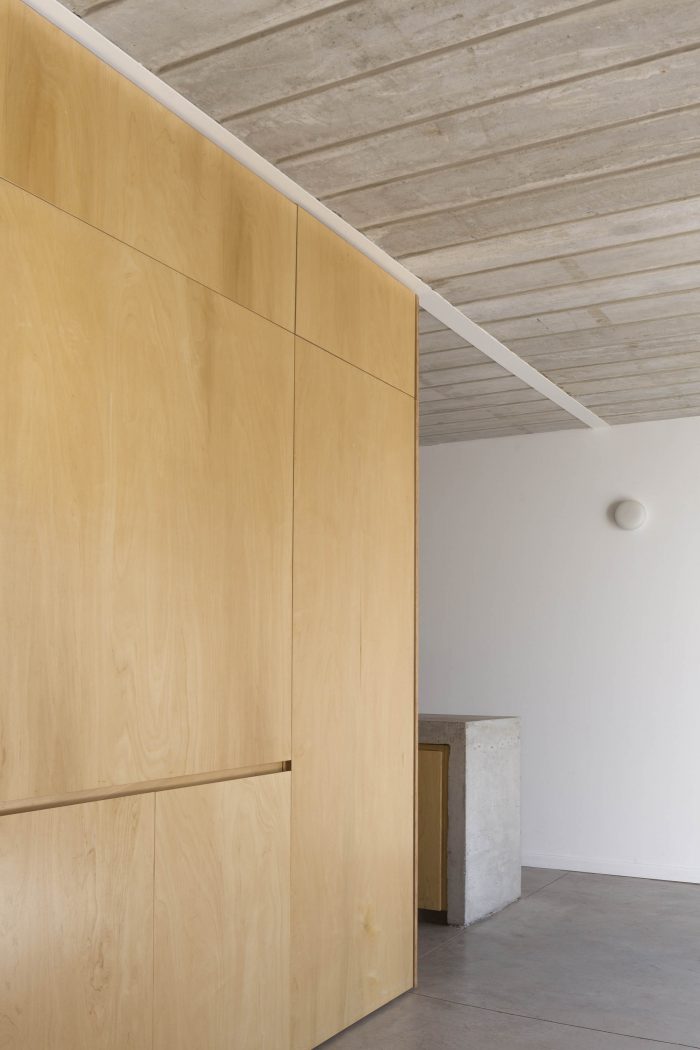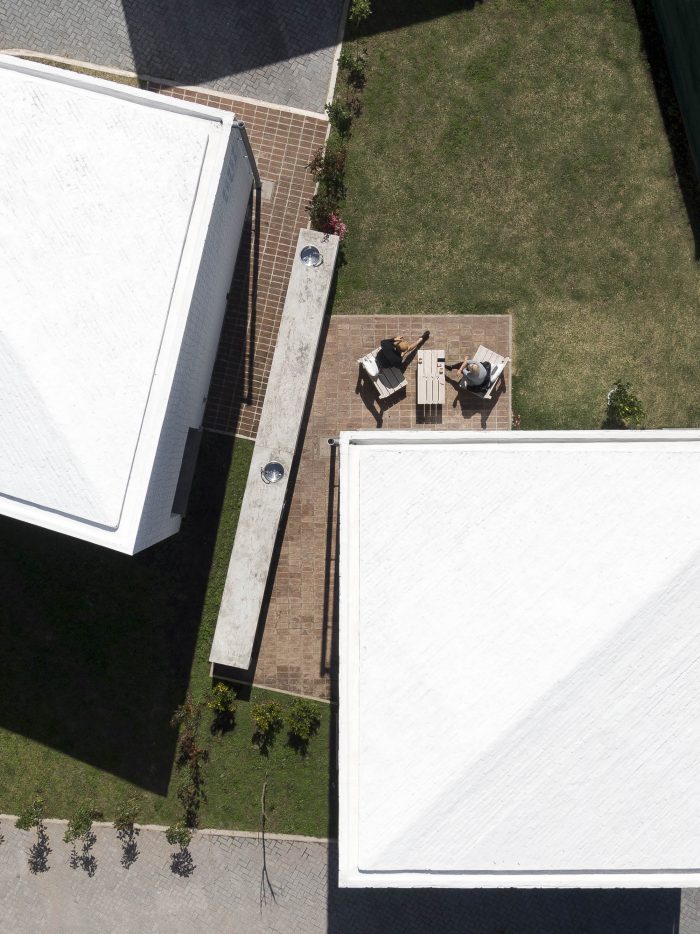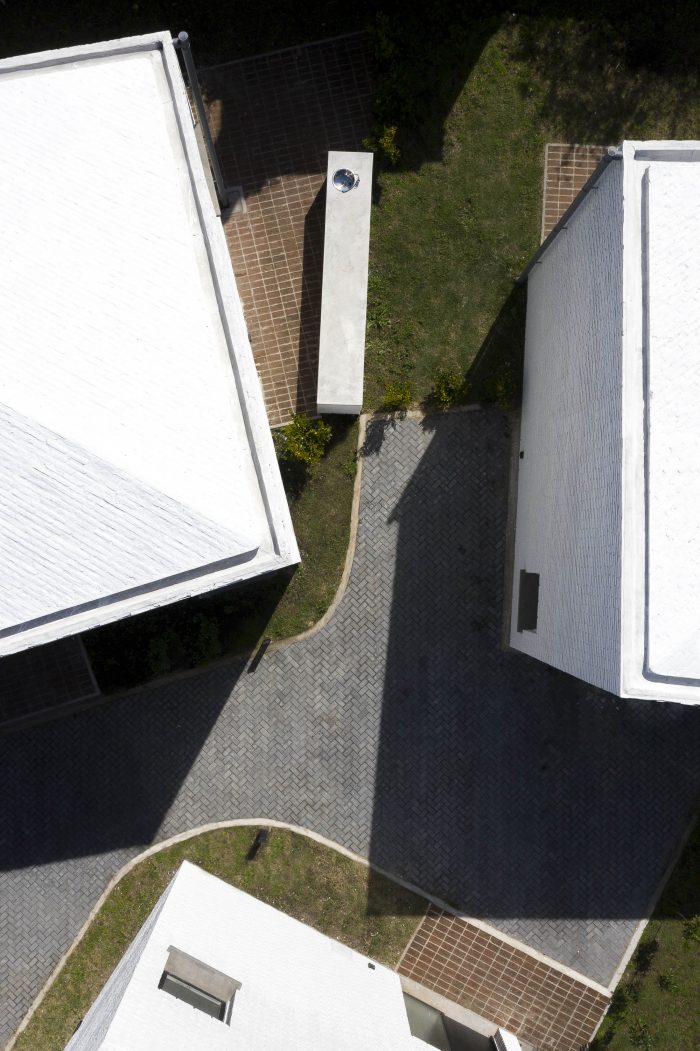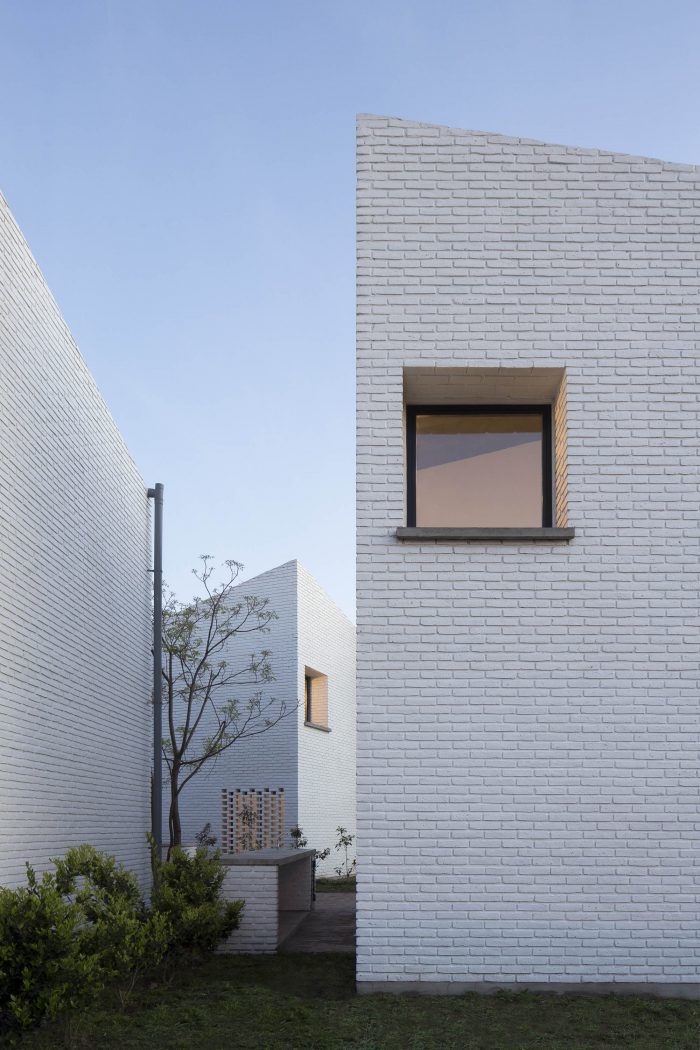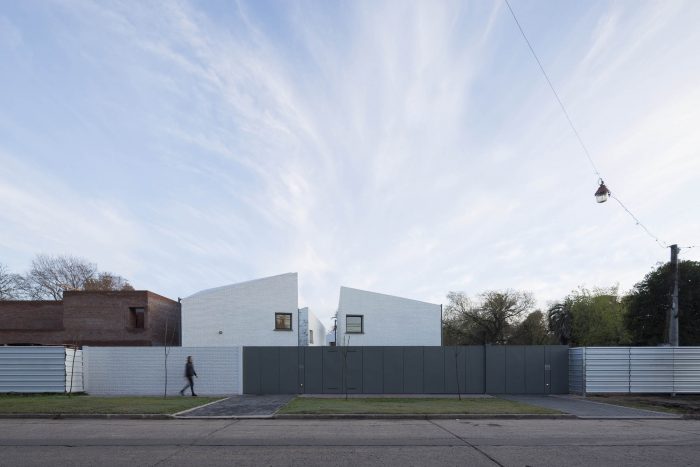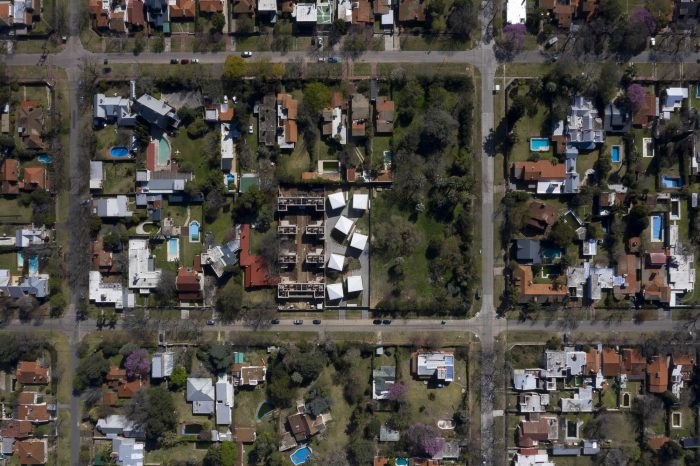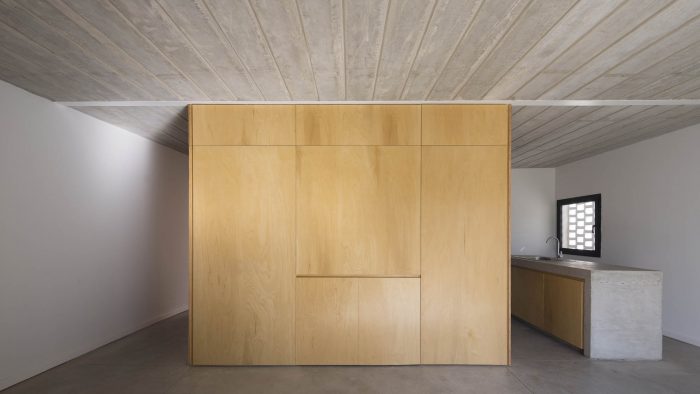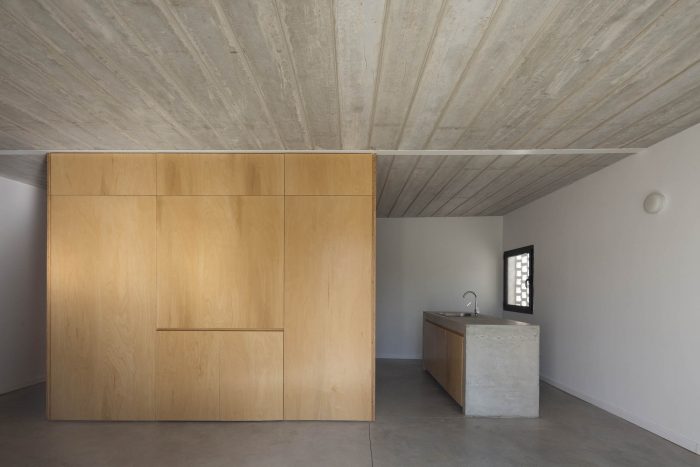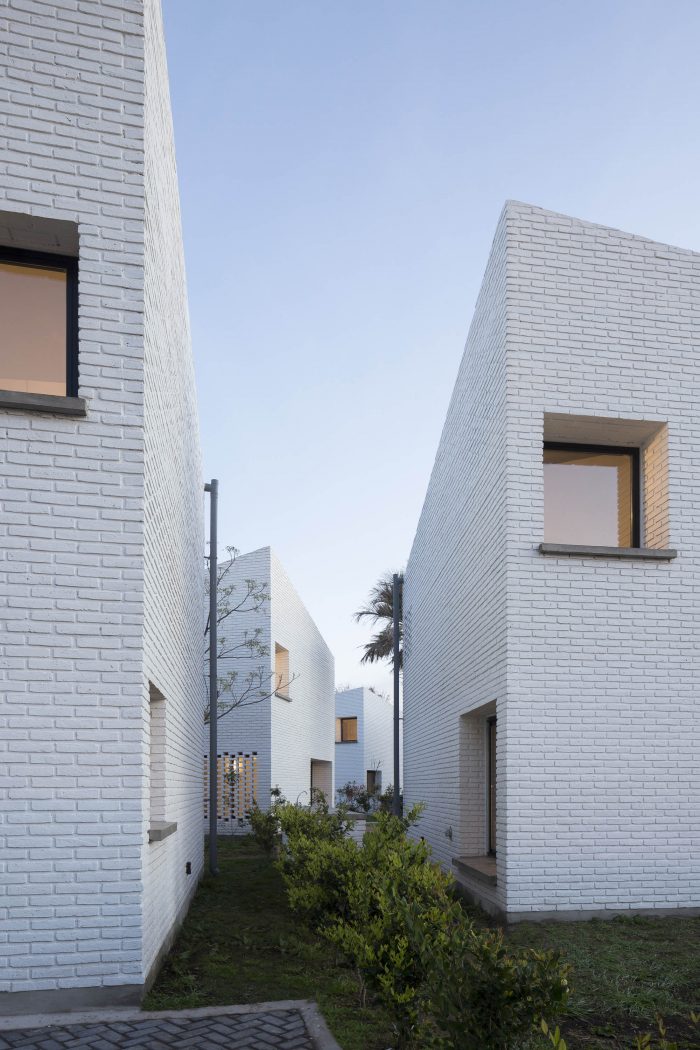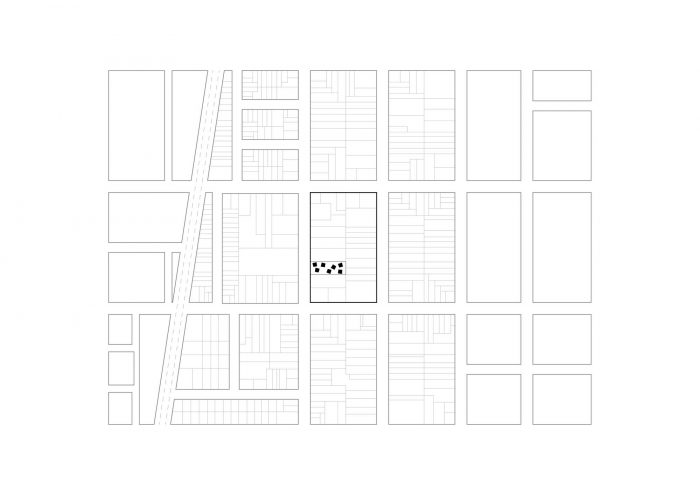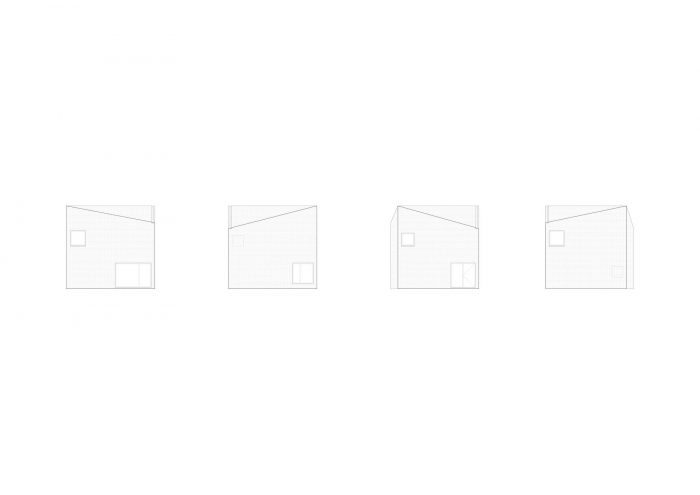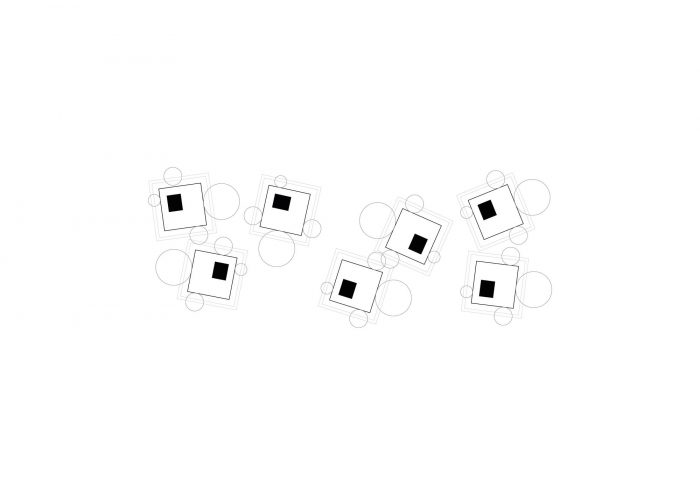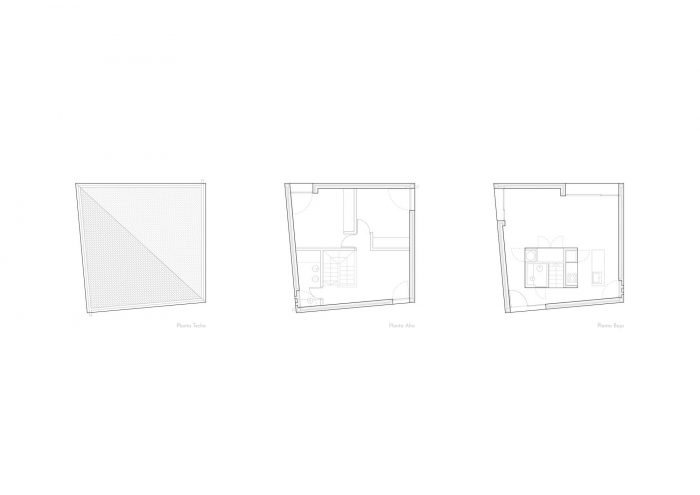这个项目的任务发生在Fisherton,一个位于罗萨里奥市西郊的住宅区,其起源于19世纪末,作为连接阿根廷中部地区和西部地区的铁路基础设施发展的结果。最初的设想是为负责铁路公司的英国高层人员建造的别墅,这导致了建筑的出现,并在当时形成了强烈的英国建筑风格趋势。大型的砖块暴露的独立房屋,由几个体量和坡屋顶组成,被突出的花园和茂密的树丛的土地延伸所包围。
The assignment for this project takes place in Fisherton, a residential borough in the western suburbs of Rosario city, its origin dates from the late 19th century, as a consequence of the development of railway infrastructure that connected the central area of Argentina to the western regions. Initially conceived as a villa for the British hierarchical staff in charge of the railway company, this led to the appearance of constructions and a strong stylistic trend according to English Architecture around that time. Large brick-exposed freestanding houses, shaped from several volumes and gabled roofs, surrounded by land extensions of prominent gardens and thick groves of trees.
从那时起,这个地区经历了几次转变,倾向于使城市结构密集化,但仍保持着原来的城市布局。起初,土地划分是按照5000平方米左右的大地块组织的。后来,大约在70-80年代,一个细分的过程发生在1500-2000平方米左右的地块,旨在为上层社会和住宅使用。它的部分原始建筑开始被新的建筑所取代,保留了一些形式、美学和材料上的相似性。如今,原始的未被改变的建筑,如老火车站和罗萨里奥高尔夫俱乐部是非常罕见的,它们依靠的是这个城市的重要部分的身份和特征。然而,大量的树丛、绿色栅栏、草地人行道和独立的房屋仍然主导着该地区的外观。
Ever since, this area has undergone several transformations tending to densify the urban fabric, yet holding on to its original urban layout. In the beginning, the land division was organized according to large plots around 5000 square meters. Later, around the 70s – 80s, a subdivision process took place into parcels around 1500-2000 square meters, aimed for the upper classes and residential use. Part of its original architecture began to be replaced by new buildings, maintaining a few formal, aesthetics and material resemblances. Nowadays, original unaltered buildings, such as the old railway station and the Rosario Golf Club are very rare to find, and on them relies the identity and character of this significant portion of the city. However, the preponderance of large groves of trees, green fences, grass sidewalks and freestanding houses remain to dominate the appearance of the area.
目前,菲什顿区正在经历新的城市密集化进程的早期阶段,1500和2000平方米左右的地块正在成为集体住房项目的所在地,而不是被大面积的、专属的、无人居住的单户住宅所包围。
At present, Fisherton borough is going through the early stages of a new process of urban densification, where the parcels around 1500 and 2000 square meters are becoming a location for collective housing projects, instead of single-family houses surrounded by large, exclusive, and unoccupied areas.
在这个特殊的项目中,我们被要求在1500平方米的地块上设计一个由七栋各100平方米的房屋组成的集合体。这意味着密度比标准高三倍,此外还意味着完全相同的建筑物体的重复,由于建筑环境中存在的多样性和高度的区别,这被证明是主要的挑战。
In this particular project, we were asked to design an ensemble of seven equal houses of 100 square meters each, located in a 1500 square meters parcel. This meant a densification three times higher than the standards, in addition to the implied repetition of the exact same built object, which turned out to be the major challenge due to the diversity and high degree of distinction existing in the constructed environment.
考虑到所有这些,我们开发了几个假设和变量来定义这些新的小房子应该是怎样的,以及哪些是在现有环境中最有意义的价值。所需的方案意味着建筑密度与城市中心强烈的综合区的密度相当。然而,我们决心关注那些在这个特殊的郊区环境中被认为有价值的独特特征。
Taking all this into account, we developed several hypotheses and variables to define how these new small houses should be, and which were the most meaningful values to consider in the existing context. The required program implied a building density comparable to that in strongly consolidated boroughs in the city centre. However, we were determined to attend to those distinctive features considered valuable in this particular suburban surrounding.
通过分析阶段,我们发现该地区的主要和最有价值的条件仍然存在于中间空间,即房屋之间以及每个房屋和其自身限制之间的间隙空间。认识到这一点作为建议的基础,这个项目旨在重新创建中间空间的情况,在不同的用途和比例:入口、扩展、停车和服务。因此,七个单元中的每一个都将成为一个独立的房子,向所有四个方向开放,并可在其整个周边行走,是所有这些唤起该地区特征的特点。
Through the analysis phase, we identified that the main and most valuable condition of the area remained in the intermediate spaces, the interstitial spaces existing between houses, and between each house and its own limits. Acknowledging this as the basis for the proposal, this project aimed to recreate that intermediate space situation, within different uses and proportions: entrance, expansion, parking, and service. Therefore, each one of the seven units would become a freestanding house, open to all four cardinal orientations and walkable around its entire perimeter, being all these features that evoke the identity of the area.
此外,一个不可动摇的要求是,每个房子都有相同的面积和分布,以及相同数量和质量的房间。这里的挑战是,从完全相同的平面图中获得七个单元,呈现出一种独特性,通过增加细微的差异或改变,使每个房子都能与其他房子区分开来,从而避免对单调风景的无限感观。将开放的中间空间理解为实现这一目标的资源,根据比例、照明和与相邻房屋的关系,每个房屋的扩展区域都会带来预期的独特性。
Furthermore, one immovable requirement was that every house had the same area and distribution, as well as equal quantity and quality of rooms. The challenge here was to obtain, from the exact same floor plan, seven units that presented a singularity, something to make each house distinguishable from the others, by adding slight differences or alterations, and so to avoid the infinite perception of a monotonous scenery. Understanding the open intermediate space as the resource to achieve this, it would be each house`s expansion area that brought that expected uniqueness, on account of proportion, lighting, and its relation to the adjoining houses.
关于合奏的衔接,我们采用了一套空间塑造的决定,其中之一是配置一条人行道,在地块内和穿过地块,结合直线、曲线和反曲线。此外,每栋房子都有轻微的旋转和屋顶倾斜,以强调其独特的条件。在较小的规模上,其他的变化也有助于这个问题,如不同的布局和开口的大小,或加入照明过滤器。
Regarding the articulation of the ensemble, we resorted to a set of space shaping decisions, being one of them the configuration of a pedestrian path, within and across the parcel, combining straight line, curve and counter curve. In addition, each house is set out with a slight rotation and roof inclinations to emphasize their singular condition. On a smaller scale, other variations contribute to this matter, such as different disposition and size of openings or the inclusion of lighting filters.
至于内部装修,我们试图重现传统Fisherton房子的功能和动态,通过将服务项目聚集在一个独特的木制容积内来完成。坐落在空间的中心,不受墙壁的限制,可以从其所有的周边进入。这个体积也是衔接每个空间和情况的联合元素,如入口、楼梯、厨房和公共区域。在面积大大缩小的上层,空间条件通过天花板的倾斜得到了优化,这也给外部带来了某种几何上的均匀性。
As for the interiors, we attempted to recreate the function and dynamic of a traditional Fisherton House, accomplished by the gathering of service programmes within a unique wood volume. Situated at the center of the space, exempt from the walls and accessible from all its perimeter. This volume also operates as the joint element that articulates each space and situation, such as the entrance, the stairs, the kitchen, and the common area. On the upper floor, of considerably reduced area, the space condition is optimized by the inclination of the ceilings, which also brings a certain geometrical homogeneity to the exteriors.
简而言之,该项目旨在维护和重申我们认为独特的、与周围环境不可分割的价值,并将其转化为该地区新的、最新的建筑方案。这个集体住房项目是以一种尊重的态度来构思的,对地点和要求都是如此,同时也是一种代表我们和我们的建筑工作的思考和做建筑的方式。
In short, this project aims to uphold and reaffirm the values that we consider distinctive and inseparable from the surroundings and translate them into a new, up-to-date architecture programme for the area. This Collective Housing Project was conceived with a respectful attitude, towards both the location and the requirements, along with a way of thinking and doing architecture that represents us and our architectural work.
Architects: BBOA – Balparda Brunel Oficina de Arquitectura
Area: 7535 ft²
Year: 2020
Photographs: Javier Agustín Rojas
Manufacturers: AutoDesk, Chaos Group, Alberto Bazan, Aquagas, Balcarce 54, Bryan Denhof, CHAR Amoblamientos, CICCIOELEC, Color Plus Pinturerias, HIPERMAT, IVANAR, Pavitec, Proios & Cia, Ricci, Robert McNeel & Associates, Trimble Navigation, Venthal
Lead Architects: Tomas Balparda, Fernando Brunel
Design Team:Gerónimo Galli , Galatti Constanza, Valle Facundo, Testa Agostina, Mascetti Franco, Colombo Antonela, Sobrero Florencia, Del Rio Manuel, Degiorgio Bruno
Clients::Frater Desarrollos
City:Rosario
Country:Argentina

